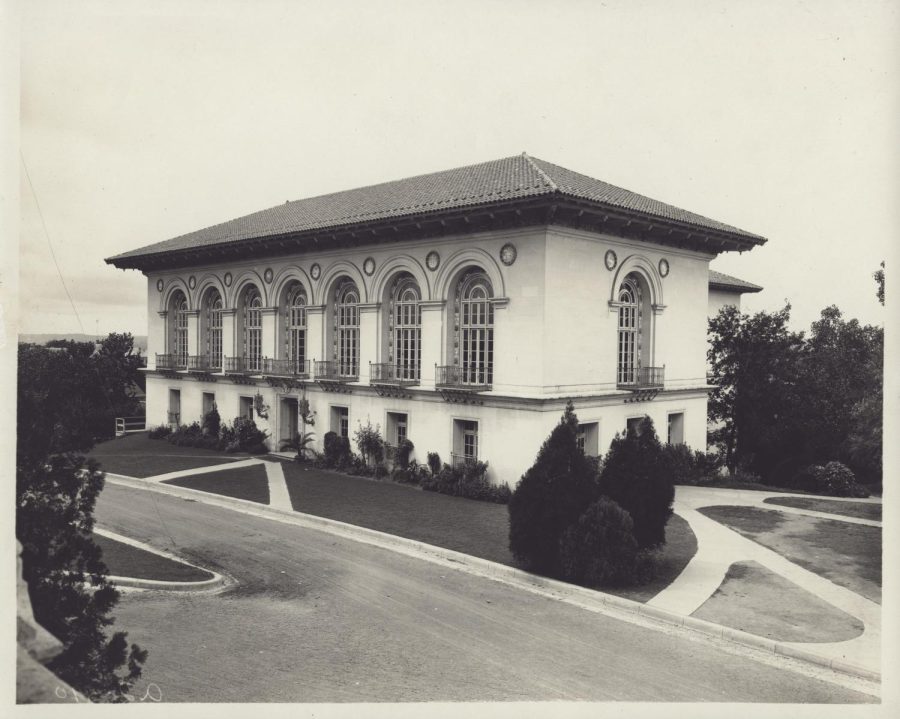Stories of Stories: behind Battle Hall’s blue doors
February 16, 2023
In a normal year, when West Mall isn’t covered in scaffolding, a particular building feature allures graduates, couples, families and tourists alike. Walk down South Mall during golden hour and they’re the reason there’s a line on 22nd Street. Scroll through #utaustin on Instagram and they’re the backdrop of every other picture. Everyone knows of UT’s iconic blue doors.
Yet, many don’t know the doors belong to Battle Hall, the site of UT’s first student protest and the stepping stone for the University’s iconic architecture. Opened as “The University Library” in 1911, the building will reopen this month after a year of renovation.
Battle Hall’s roots trace back to 1909, when UT suffered from a problem: its aspiration to become a “university of the first class” was hindered by its physical form. The University was a haphazard collection of eight buildings of widely disparate styles and materials. UT needed a campus that would project a distinct, enduring image — one that would inspire generations to come.
To create such an image, the University turned to Cass Gilbert, the architect who would go on to design the U.S. Supreme Court building. Gilbert and his team created a master plan for the campus.
“(UT) was honestly kind of a mess,” architecture professor Larry Speck said. “So it was visionary to reimagine this whole campus. Their master plan laid out a new main building, West Mall, South Mall, East Mall, all the character (of) the campus that we know today. And Battle Hall was the first building built according to the plan.”
When designing Battle Hall, Speck said Gilbert first looked to Texas’s environment.
“Our climate and landscape reminded (Gilbert) of southern Spain,” Speck said. “So he thought the (Mediterranean) architectural character would be appropriate.”
Gilbert incorporated deep overhangs, large windows and limestone — a bountiful material in both the Mediterranean and Central Texas — to handle hot summers and incorporate various architectural motifs from the Renaissance. As a synthesis of unique environmental factors and academic tradition, Battle Hall became a truly Texan expression.
“(Battle Hall) was super critical because it opened up a whole new era of what the campus would be like,” Speck said. “It was the first building on the campus that had the limestone and red tile roof, that Mediterranean character. It established the (architectural) vocabulary that (is) followed to this day.”
In the summer of 1917, Battle Hall became the site of one of UT’s first protests. According to a research article by Jim Nicar, the founder of The UT History Corner, a group of students tried to enter the library without coats, allegedly violating dress code. Refusing to budge, they revealed that the dress code did not apply to the library. As a result, everyone in the library shed their coats, ending the tradition of wearing coats on hot days.
In the decades since, Battle Hall remains a favorite amongst students looking for a cool, quiet place to study. Speck said he remembers visiting its reading room, which his parents frequented while attending UT.
“When I was a little kid, I can remember going to that room and (there were) tons of warm wood, big-trussed ceiling at the top, and big library tables with lights on them (that) feel very academic,” Speck said. “It’s drop-dead gorgeous, really beautiful and rich … I can talk about that building for hours and hours.”



